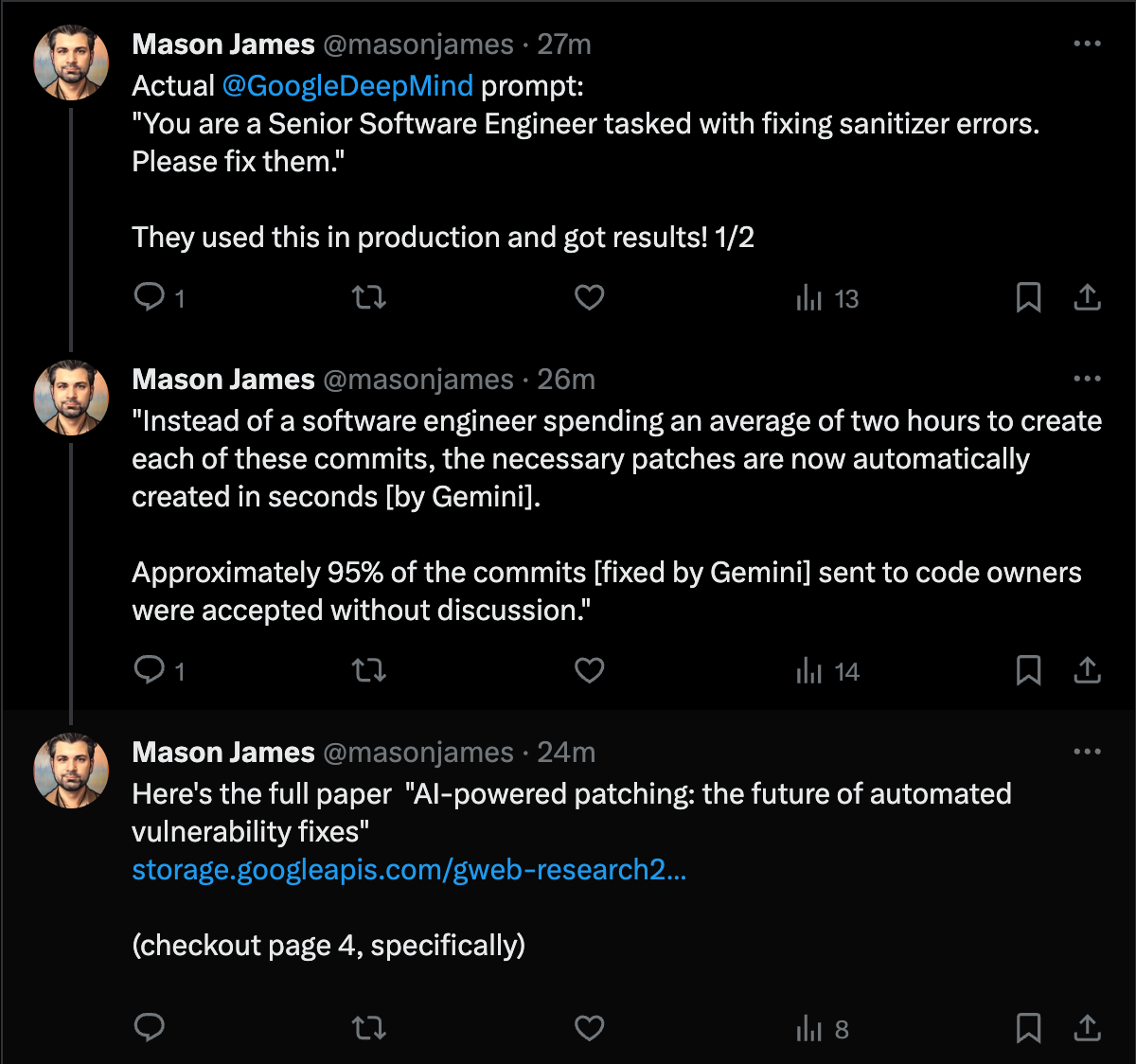The AI Revolution in Big Tech: How Giants Like Google and OpenAI Are Leading the Charge

Today Google released it's most advanced Large Language Model (LLM), Gemini Ultra. This represents another milestone in the advancement of AI. Specifically, Gemini Ultra matches the performance of GPT4. OpenAI has had the uncontested crown since GPT4's release last year. With Google's latest model, there are now multiple models at the same level. And whatever OpenAI's secret sauce is, the model performance can be replicated. That said, you may be weary of the hype behind the benchmarks and advanced prompting. We've all read about the news - but is there substance here?
We need only consider work from companies like Microsoft, Google, and OpenAI. These companies build models, but in the spirit of dog-fooding, they also use their own models directly.
To begin, let's look at 3 recent events over the past year, which lifearchitect.ai explains in a recent memo:
These are the first glimpses of a completely new economy, and the new way of doing things in humanity’s next revolution:
- Mar/2023: OpenAI uses GPT-4 to help write the GPT-4 paper: ‘GPT-4 was used in the following ways: to help us iterate on LaTeX formatting; for text summarization; and as a copyediting tool.’ Read more: GPT-4 Technical Report (appendix)
- Dec/2023: OpenAI uses GPT-4 to prepare GPT-5 and future models: ‘For instance, we’re leveraging the immense capabilities of GPT-4 to innovate on safety, trimming the time it takes to undertake some safety processes down from months to hours.’ Read more: OpenAI—written evidence to UK govt (PDF)
- Jan/2024: Google uses Gemini to fix their code: ‘Instead of a software engineer spending an average of two hours to create each of these commits, the necessary patches are now automatically created in seconds [by Gemini].’ Read more: Google—AI-powered patching: the future of automated vulnerability fixes (PDF).
That final example is intriguing because we are given real metrics to review. I started a conversation about this use of AI in software engineering over on Twitter/X:

The impact of AI on professional environments can be both subtle and monumental. For instance, consider Google's Gemini model's achievement in addressing 15% of sanitization errors. In isolation, this figure might seem modest, but when applied to Google's vast and intricate codebases, the implications are profound. This is not merely about rectifying errors; it's about revolutionizing the efficiency of the debugging process. Typically, these efforts would require substantial human labor—meticulous review by seasoned engineers who would comb through millions of lines of code. The time saved translates into faster deployment of secure, robust software for end-users, and it allows engineers to reallocate their expertise to more creative and complex problems.
Then there's the simplicity of the prompt used to direct the Gemini model. This represents a leap in user-friendly AI interactions. Gone are the days of intricate scripting or complex command inputs. Instead, we enter an era where straightforward instructions, such as "Please fix them," are sufficient to set AI into effective action. This ease of use heralds a future where AI becomes more accessible to professionals without deep technical backgrounds, democratizing the benefits of these advanced tools.
As AI models like GPT-4.5/5, Llama3, and the upcoming Gemini Ultra 2 are released this year, we anticipate a decrease in the necessity for specialized prompt engineering. The trajectory points towards an intuitive collaboration between AI and humans, leading to a symbiotic workplace where AI handles an increasing share of technical heavy lifting.
This transition is particularly exciting because it suggests a near future where the integration of AI into our work lives could be as seamless as using a search engine. Imagine AI systems that can intuitively grasp project goals from a simple sentence, adapt to user preferences over time, and even anticipate needs to propose solutions proactively.
Indeed, what we're witnessing now with AI's role in professional settings is just the tip of the iceberg. The real-world applications we see today are impressive, but they represent a fraction of what will become possible as these technologies mature. The narrative of AI in the workplace is unfolding rapidly, and its next chapters are likely to be even more transformative than we can currently imagine.
